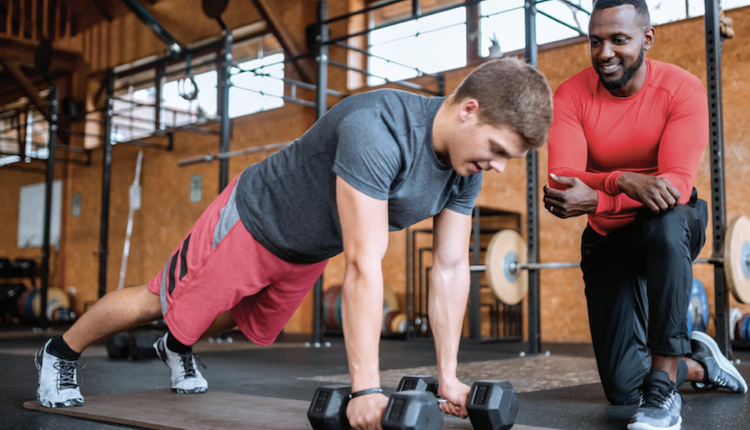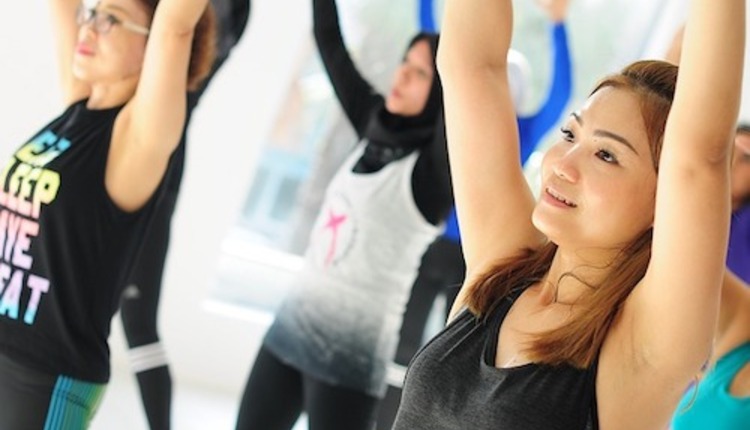IDEA Health & Fitness Association, the leading membership organization of health, wellness and fitness professionals worldwide with more than 23,000 members in over 80 countries, has revealed the results of its 2008 IDEA Personal Training Programs & Equipment Survey. The results from this year's revamped survey offer greater insight into the respondents' training and business practices while delving into personal training trends, new instructional formats and business best practices for both individual trainers and trainer-entrepreneurs.
This year's survey data was gathered from 926 IDEA personal trainer members, who offer personal training in their clients' homes, their own homes as well as at multi-purpose health clubs and personal training gyms. The focus within the private session time typically includes strength training, stretching, balance and functional resistance training. While the clientele of the personal trainers surveyed was quite diverse, the respondents served a predominantly female client base (72%) with the most common age ranges being 35-44 years (22%), 45-54 years (28%) and 55-64 years (22%). Overwhelmingly, one-on-one training is still the dominant session format, being offered by 99% of the respondents, while two clients sharing a personal training session also made a strong showing, with 84% of respondents offering this kind of service. The average cost of a professional personal training session is $58.
According to Kathie Davis, co-founder and executive director of IDEA Health & Fitness Association, this year's IDEA Personal Training Programs & Equipment Survey reveals that a variety of training formats and methodologies are being introduced to meet diverse client needs. "Group training sessions and functional resistance training are on the upswing as are fitness assessments and the continuing adoption of small, portable pieces of equipment," she says. "Personal trainers realize their clientele have a vast spectrum of requirements, and the survey results show trainers are doing all they can to meet these differing demands while inspiring their clients to make active, healthy lifestyle choices."
Session Trends
The survey's respondents report that 85% of their clients stay with the business for one year or longer as trainers are adopting new techniques to keep clients coming for more. Highlights from this year's survey include:
Equipment Trends
Survey highlights on the use of equipment include:
"The further in-depth findings of this year's survey prove personal trainers continue to meet the challenge of finding and providing new ways to Inspire the World to Fitness," concludes Davis. "By utilizing the latest in programs and equipment, personal trainers are keeping their clients motivated while building thriving training businesses."
For more information on this survey, go to www.ideafit.com.
IDEA Health & Fitness Association (www.ideafit.com) is the world's leading membership organization of fitness and wellness professionals with more than 23,000 members in over 80 countries. Since 1982, IDEA has provided personal trainers, group exercise instructors, fitness program directors, mind-body teachers, health club owners and fitness center managers with pertinent information, health and fitness educational opportunities, career development programs and industry leadership while helping them enhance the quality of life worldwide through safe, effective lifestyle and fitness programs. IDEA members interact with consumers more than 25 million times a year in the fitness marketplace.
This year's survey data was gathered from 926 IDEA personal trainer members, who offer personal training in their clients' homes, their own homes as well as at multi-purpose health clubs and personal training gyms. The focus within the private session time typically includes strength training, stretching, balance and functional resistance training. While the clientele of the personal trainers surveyed was quite diverse, the respondents served a predominantly female client base (72%) with the most common age ranges being 35-44 years (22%), 45-54 years (28%) and 55-64 years (22%). Overwhelmingly, one-on-one training is still the dominant session format, being offered by 99% of the respondents, while two clients sharing a personal training session also made a strong showing, with 84% of respondents offering this kind of service. The average cost of a professional personal training session is $58.
According to Kathie Davis, co-founder and executive director of IDEA Health & Fitness Association, this year's IDEA Personal Training Programs & Equipment Survey reveals that a variety of training formats and methodologies are being introduced to meet diverse client needs. "Group training sessions and functional resistance training are on the upswing as are fitness assessments and the continuing adoption of small, portable pieces of equipment," she says. "Personal trainers realize their clientele have a vast spectrum of requirements, and the survey results show trainers are doing all they can to meet these differing demands while inspiring their clients to make active, healthy lifestyle choices."
Session Trends
The survey's respondents report that 85% of their clients stay with the business for one year or longer as trainers are adopting new techniques to keep clients coming for more. Highlights from this year's survey include:
- During typical sessions, 54% of the time is spent on resistance training; 22% is spent on cardiorespiratory exercise; and the rest of the time is split between flexibility and other training methods.
- Strength training (97%) and functional resistance training (96%) top the list as the most common resistance training methods trainers use. Body-weight-only training (76%) and plyometrics (67%) also were popular.
- Among cardiorespiratory training techniques, interval training (85%) is used slightly more than other methods, with circuit (79%), cardiorespiratory endurance (79%) and cross-training (75%) following closely behind. Trainers also include specialized options such as balance training (96%) and speed, agility and quickness conditioning (69%).
- Despite the rise in childhood obesity, only 65% of personal trainers said they offered classes for youth 18 years old or younger and only a little more than one-third (36%) provide personal training for youths in small groups. Additionally, less than 50% of the respondents felt the growth in personal training for youths is strong.
Equipment Trends
Survey highlights on the use of equipment include:
- Small, portable pieces of exercise equipment continue to be the most popular. Overall, survey respondents said they use a variety of equipment to meet clients' diverse needs.
- Resistance tubing or bands (97%), stability balls (97%), barbells and dumbbells (95%), medicine balls (91%) and balance gear (BOSU Balance Trainers, disks, wobble boards, balance boards) rank as the most frequently available equipment.
- Balance gear was cited by the highest percentage of personal trainers (73%) as most likely to grow.
- Pulley equipment and treadmills are the only large pieces of exercise equipment to make the top 10 most frequently offered gear.
- Strength equipment, such as selectorized (pin-selected) and plate-loaded machines are being offered by 66 and 65% of the survey respondents, respectively.
- The majority of the respondents also offer cardio equipment, including elliptical trainers (72%), recumbent cycles (66%) and upright cycles (62%).
"The further in-depth findings of this year's survey prove personal trainers continue to meet the challenge of finding and providing new ways to Inspire the World to Fitness," concludes Davis. "By utilizing the latest in programs and equipment, personal trainers are keeping their clients motivated while building thriving training businesses."
For more information on this survey, go to www.ideafit.com.
IDEA Health & Fitness Association (www.ideafit.com) is the world's leading membership organization of fitness and wellness professionals with more than 23,000 members in over 80 countries. Since 1982, IDEA has provided personal trainers, group exercise instructors, fitness program directors, mind-body teachers, health club owners and fitness center managers with pertinent information, health and fitness educational opportunities, career development programs and industry leadership while helping them enhance the quality of life worldwide through safe, effective lifestyle and fitness programs. IDEA members interact with consumers more than 25 million times a year in the fitness marketplace.











